WHSmith Bundle
How did a small newsstand become a global retail giant?
Journey back in time to uncover the remarkable WHSmith SWOT Analysis, a story of resilience and reinvention that spans over two centuries. From its humble beginnings as a news vendor in 1792, the WHSmith company has consistently adapted to changing times. Discover how this British retail icon navigated economic shifts and technological advancements to become a household name.
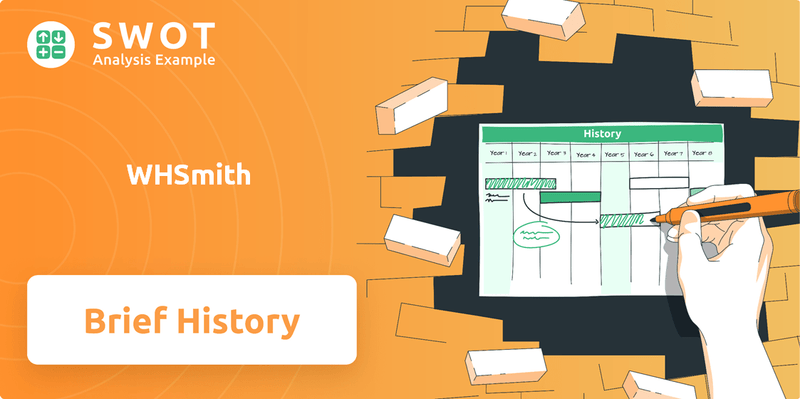
The WHSmith history is a testament to strategic foresight, evolving from railway bookstalls to modern travel retail. This brief exploration will delve into the key milestones and innovations that shaped the WHSmith, examining its expansion timeline and significant events that contributed to its enduring legacy. Learn about the company's evolution, its impact on retail, and its current status in the global market.
What is the WHSmith Founding Story?
The story of the WHSmith company, a cornerstone of British retail, begins in 1792. This marks the year when Henry Walton Smith and his wife Anna laid the foundation for what would become a retail giant. Their initial enterprise, a small news-stand in London, was a direct response to the rising demand for newspapers and periodicals during a time of increasing literacy and public interest in news.
The Smiths' business model was simple yet effective: they provided a reliable distribution point for newspapers and pamphlets. This approach allowed them to capitalize on the growing need for accessible information. Although the exact founding date isn't specified in all sources, the year 1792 is consistently cited as the genesis of their venture. The business would later evolve and become known as W.H. Smith after their son, William Henry Smith, took over the family business.
The early funding for the business was likely self-financed, a common practice for family-run businesses of that era. The cultural and economic environment of the late 18th century, characterized by increasing literacy and a growing public interest in news, created a favorable environment for such a venture to prosper. The Smiths' venture was a direct response to this societal shift, providing a crucial link between publishers and readers. For more insights into the company's strategic evolution, consider reading about the Growth Strategy of WHSmith.
WHSmith SWOT Analysis
- Complete SWOT Breakdown
- Fully Customizable
- Editable in Excel & Word
- Professional Formatting
- Investor-Ready Format
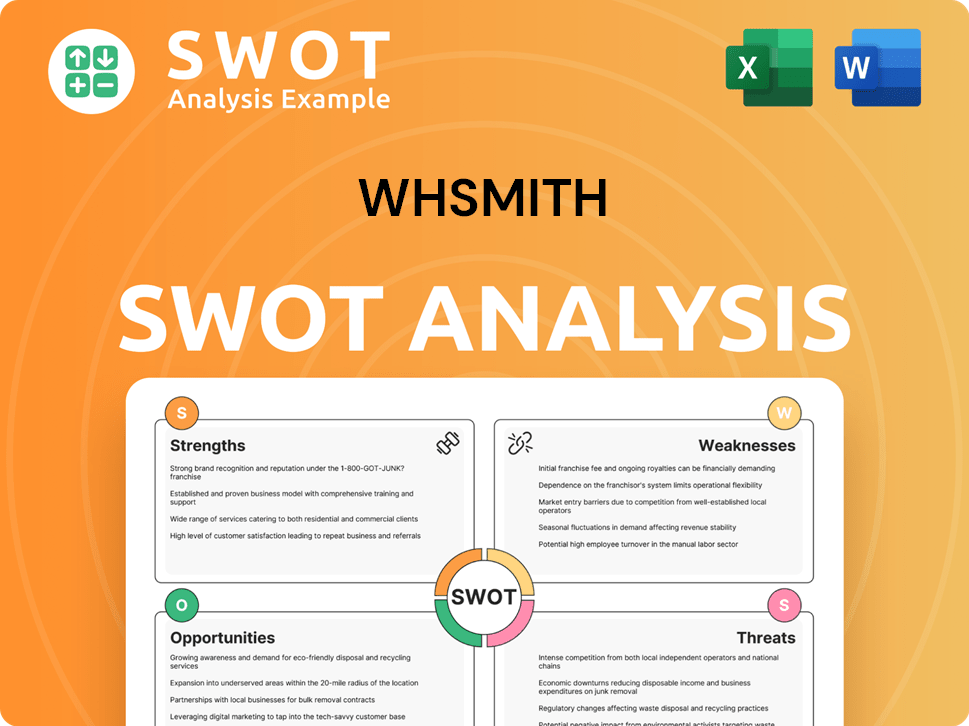
What Drove the Early Growth of WHSmith?
The early growth and expansion of the WHSmith company, a significant chapter in British retail history, was marked by strategic innovations and adaptations. The company's ability to recognize and capitalize on emerging trends, like the railway system, was crucial. This proactive approach transformed WHSmith from a local news vendor into a national retail powerhouse, setting the stage for its future endeavors.
The advent of the railway system in the 19th century significantly propelled WHSmith's expansion. In 1848, the company opened its first railway bookstall at Euston station, a strategic move to reach a captive audience of travelers. By 1850, WHSmith had established bookstalls at numerous railway stations across the UK, a pivotal moment in its history.
Throughout the late 19th and early 20th centuries, WHSmith diversified its offerings beyond newspapers and books. They began including stationery and other related products. The company expanded its presence on high streets, opening traditional retail stores, solidifying its position as a leading retailer.
During this period of expansion, WHSmith saw steady team growth and established a more formalized corporate structure. This evolution was essential for managing the increasing scale of operations and the growing number of locations. Adapting its business model was key to its sustained growth.
The company's ability to anticipate and capitalize on evolving consumer habits and technological advancements proved crucial to its sustained growth. This foresight allowed WHSmith to remain relevant and competitive in the dynamic retail landscape. The company's adaptability is a key part of its WHSmith history.
WHSmith PESTLE Analysis
- Covers All 6 PESTLE Categories
- No Research Needed – Save Hours of Work
- Built by Experts, Trusted by Consultants
- Instant Download, Ready to Use
- 100% Editable, Fully Customizable
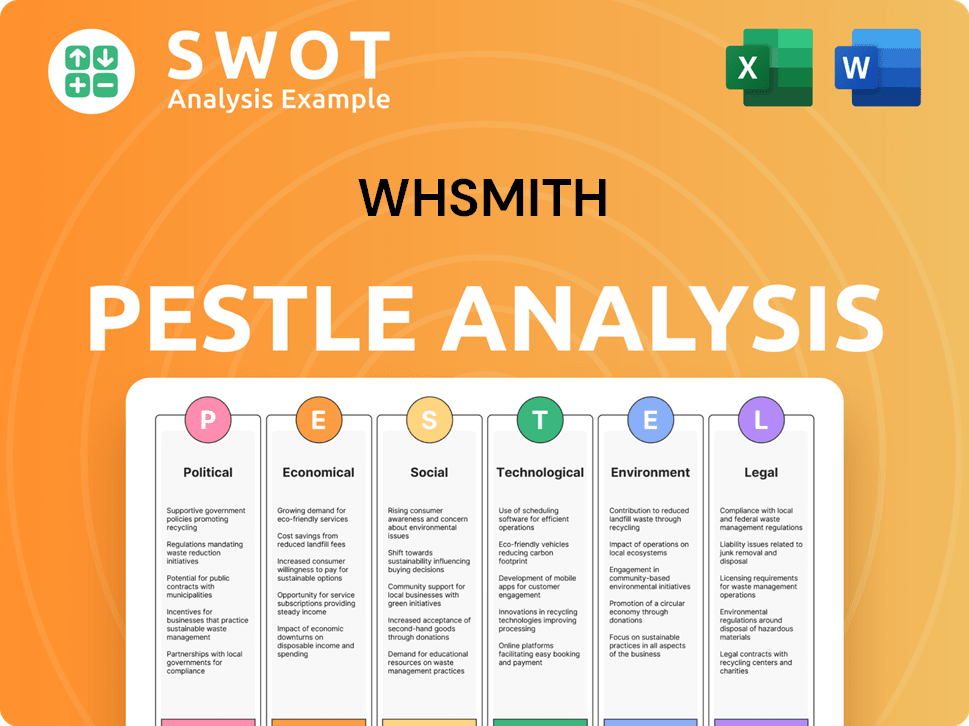
What are the key Milestones in WHSmith history?
The WHSmith company has a rich history, marked by significant milestones that have shaped its evolution from a newsagent to a global retailer. From its humble beginnings to its modern-day presence, the company's journey reflects key adaptations and strategic decisions.
| Year | Milestone |
|---|---|
| 1792 | Henry and Anna Smith establish a news vending business in London. |
| 1828 | The company opens its first shop at 192 Strand, London. |
| 1848 | WHSmith begins operating railway bookstalls, revolutionizing the distribution of reading materials. |
| 1900s | The company expands its high street presence and diversifies its product range. |
| 2000s | WHSmith focuses on its travel retail business, expanding its presence in airports and train stations. |
| 2024 | WHSmith reports a 13% increase in total revenue for the 20 weeks to January 20, 2024, driven by strong performance in its Travel division. |
Throughout its history, WHSmith has introduced several innovations that have defined its success. The establishment of railway bookstalls was a groundbreaking move, making reading materials accessible to travelers and setting a precedent for retail convenience. The company's strategic shift towards travel retail in recent years demonstrates its ability to adapt and innovate in response to changing market dynamics.
This innovation in the mid-19th century revolutionized access to reading materials for travelers.
The company expanded its high street presence and diversified its product range to include stationery, magazines, and confectionery.
A strategic shift towards travel retail, operating in airports, train stations, and hospitals.
Despite its successes, the
The rise of online retail has intensified competition, impacting traditional brick-and-mortar stores.
The decline in traditional print media has affected the sales of newspapers, magazines, and books.
The high street segment continues to face challenges, with like-for-like revenue declines.
WHSmith Business Model Canvas
- Complete 9-Block Business Model Canvas
- Effortlessly Communicate Your Business Strategy
- Investor-Ready BMC Format
- 100% Editable and Customizable
- Clear and Structured Layout
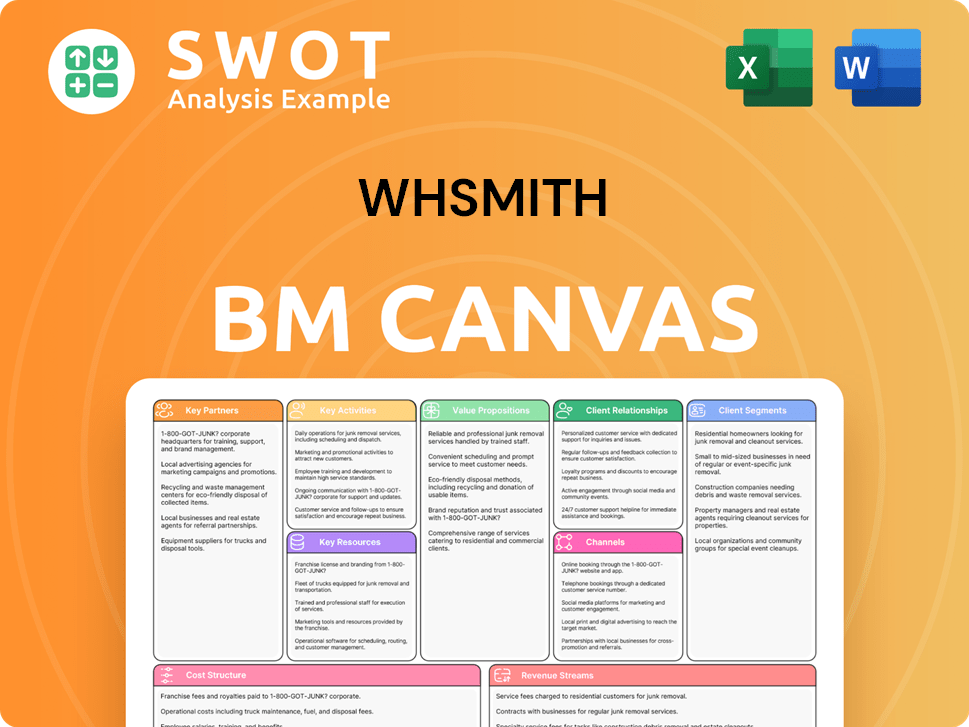
What is the Timeline of Key Events for WHSmith?
The WHSmith history is marked by significant milestones, reflecting its adaptation and growth within the retail landscape. From its newsstand beginnings to its expansion into railway stations and high streets, the company has consistently evolved to meet changing consumer needs. The journey includes diversification into various product categories and a strategic shift towards travel retail, which has become a cornerstone of its recent success. The company has shown resilience by navigating challenges such as the COVID-19 pandemic, and it continues to focus on global expansion and digital enhancements.
| Year | Key Event |
|---|---|
| 1792 | Henry Walton Smith and Anna Smith opened a news-stand in London, marking the beginning of the company. |
| 1848 | The company opened its first railway bookstall at Euston station, a pivotal move in its expansion. |
| 1850 | WHSmith significantly expanded its railway bookstalls across the UK, establishing a strong presence in travel hubs. |
| Late 19th/Early 20th Century | WHSmith diversified into stationery and opened high street stores, broadening its retail footprint. |
| 1970s-1990s | The company continued its expansion and diversified further into music and video, adapting to new consumer trends. |
| Early 2000s | WHSmith began a strategic shift towards travel retail, recognizing the potential in airports and train stations. |
| 2010s | The company accelerated its international expansion of its travel retail format, increasing its global presence. |
| 2020-2021 | WHSmith navigated significant challenges posed by the COVID-19 pandemic, particularly impacting its travel division. |
| 2023 | The travel division reported a strong recovery, exceeding pre-pandemic levels, demonstrating resilience. |
| 22 January 2024 | WHSmith announced its trading update for the 20 weeks to January 20, 2024, showing a 13% increase in total revenue, driven by its Travel division. |
| June 2024 | WHSmith is reported to have 1,700 stores globally. |
WHSmith is prioritizing the expansion of its travel retail division, focusing on airports, train stations, and other travel hubs. This strategic focus leverages the increasing global travel market. In the 20 weeks to January 20, 2024, the company secured over 120 new stores, with 50 already opened.
The company aims to enhance its digital offerings to cater to the evolving needs of travelers. This includes improving online platforms and integrating digital solutions within its physical stores. These improvements are designed to enhance the overall customer experience and drive sales.
WHSmith is focused on optimizing its product mix to meet the specific demands of travelers. This includes offering a range of essential products and convenience items. The company is adapting its inventory to align with the needs of its on-the-go customers.
While the high street segment remains challenging, WHSmith's future strategy is primarily centered on its travel retail arm. The company is strategically allocating resources to its more resilient and expanding travel retail sector. This focus ensures the company's long-term growth.
WHSmith Porter's Five Forces Analysis
- Covers All 5 Competitive Forces in Detail
- Structured for Consultants, Students, and Founders
- 100% Editable in Microsoft Word & Excel
- Instant Digital Download – Use Immediately
- Compatible with Mac & PC – Fully Unlocked
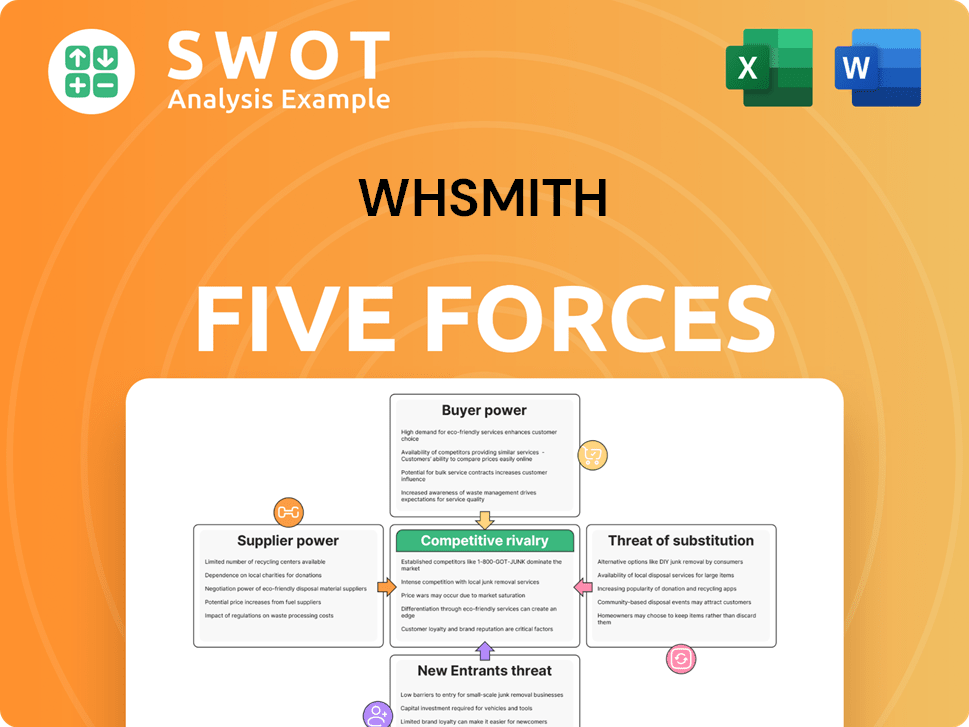
Related Blogs
- What is Competitive Landscape of WHSmith Company?
- What is Growth Strategy and Future Prospects of WHSmith Company?
- How Does WHSmith Company Work?
- What is Sales and Marketing Strategy of WHSmith Company?
- What is Brief History of WHSmith Company?
- Who Owns WHSmith Company?
- What is Customer Demographics and Target Market of WHSmith Company?
Disclaimer
All information, articles, and product details provided on this website are for general informational and educational purposes only. We do not claim any ownership over, nor do we intend to infringe upon, any trademarks, copyrights, logos, brand names, or other intellectual property mentioned or depicted on this site. Such intellectual property remains the property of its respective owners, and any references here are made solely for identification or informational purposes, without implying any affiliation, endorsement, or partnership.
We make no representations or warranties, express or implied, regarding the accuracy, completeness, or suitability of any content or products presented. Nothing on this website should be construed as legal, tax, investment, financial, medical, or other professional advice. In addition, no part of this site—including articles or product references—constitutes a solicitation, recommendation, endorsement, advertisement, or offer to buy or sell any securities, franchises, or other financial instruments, particularly in jurisdictions where such activity would be unlawful.
All content is of a general nature and may not address the specific circumstances of any individual or entity. It is not a substitute for professional advice or services. Any actions you take based on the information provided here are strictly at your own risk. You accept full responsibility for any decisions or outcomes arising from your use of this website and agree to release us from any liability in connection with your use of, or reliance upon, the content or products found herein.